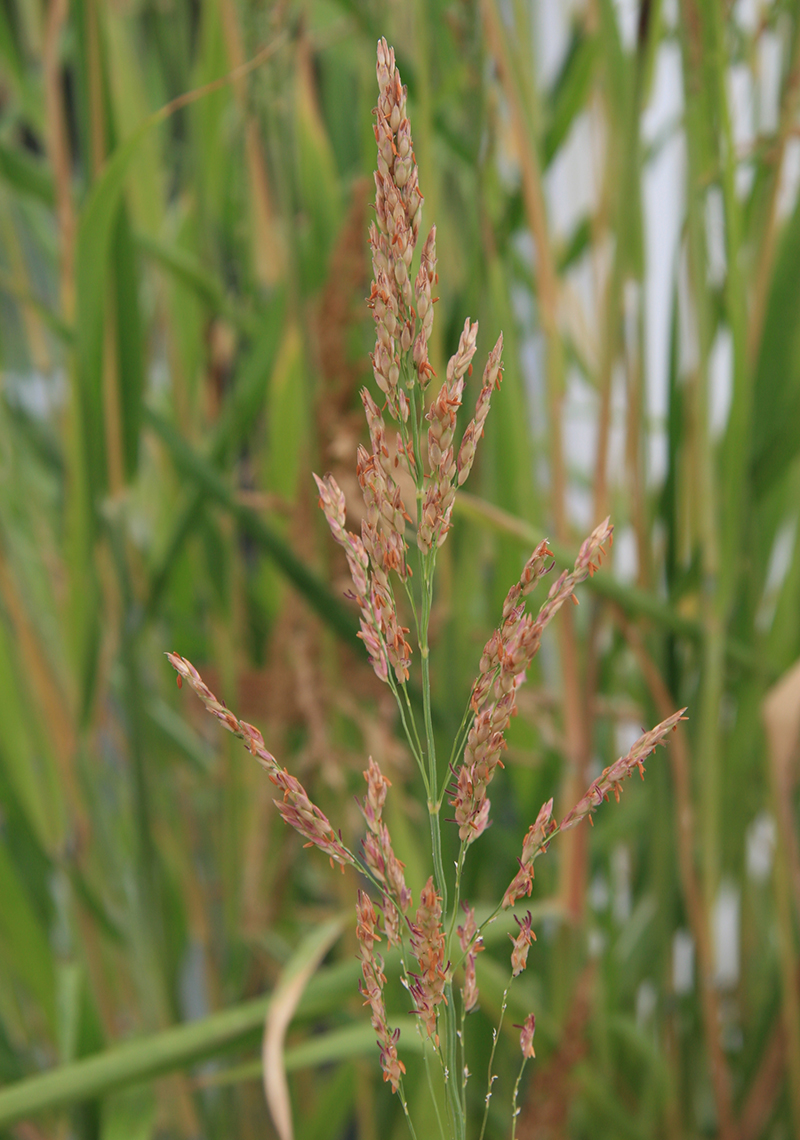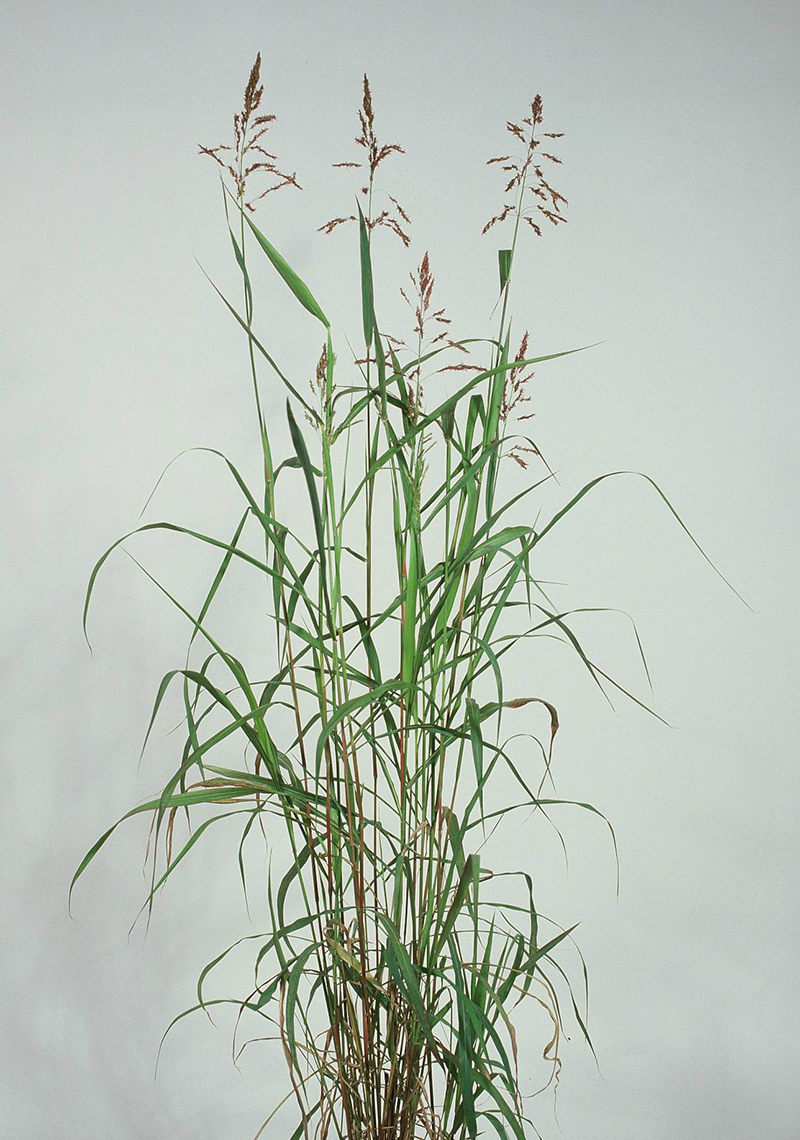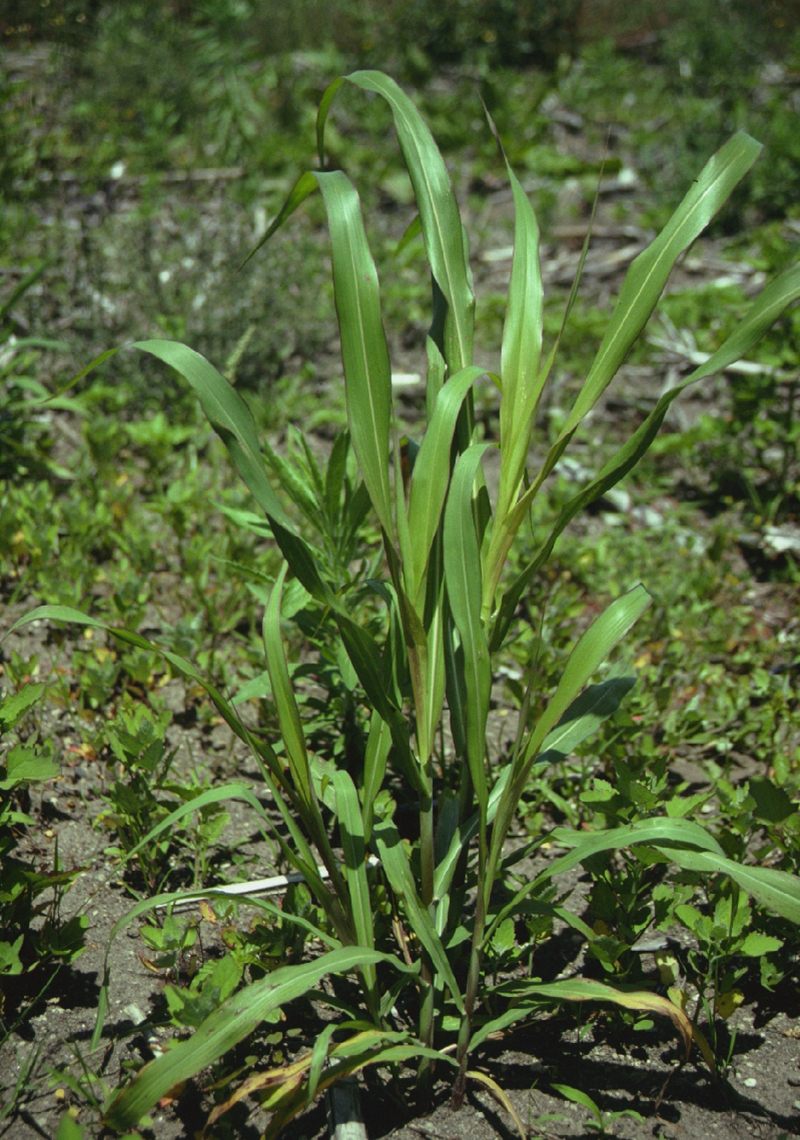About Johnson grass
Johnson grass is a native of the Mediterranean (Southern Europe, North Africa and Western Asia), and is a perennial summer grass. It can form dense thickets that exclude most other plants.
The distinguishing features of Johnson grass are:
- seedlings look like young maize plants
- mature plants vary in height from 50 cm to 300 cm
- ribbed leaf sheaths are often hairy on the inside of the junction with the blade.
Johnson grass leaf blades are flat, alternating, up to 900 mm long, and 20 mm to 50 mm wide. The midrib of the leaves is whitish on the underside.
Seed is the main dispersal mechanism. Additionally, rhizomes (underground root-like stems) are readily distributed by cultivation. Only a small section of a rhizome is sufficient to produce another plant. Seeds and pieces of rhizome can be transported to new sites on earthworks and farm equipment and machinery.
Why we don't want Johnson grass in New Zealand
Johnson grass is considered one of the world's 10 worst weeds. It could have a major economic impact on New Zealand pastoral farming and cropping should it establish here. This plant forms dense spreading patches, often out-competing other grasses and crops. In some conditions, Johnson grass is toxic to stock and is a fire hazard.
Establishment of Johnson grass would see increased labour costs to control weeds, reduced yields for many arable crops, and reduced net farm income.
Where Johnson grass has been found
This weed was previously present in several regions from Northland to Canterbury, and until 2021 was thought to have been eradicated from New Zealand. Johnson grass was most recently detected in the Auckland region in March 2021.
Johnson grass eradication programme
Johnson grass is one of the species being eradicated through the National Interest Pest Responses programme. The eradication programme consists of manual removal of all plant parts including seed heads, rhizomes and associated soil, or herbicide application. Currently, there’s only one known site under monitoring in New Zealand and no live plants have been detected at this site since 2021.
Biosecurity New Zealand works closely with the regional councils, the Department of Conservation, and other organisations to eradicate this weed from New Zealand.
National Interest Pest Responses programme
What to do if you find Johnson grass
Johnson grass is an Unwanted Organism under the Biosecurity Act (1993). Propagation, spread, display, and sale are all prohibited. It is also a Notifiable Organism, which means you must report all sightings to the Ministry for Primary Industries (MPI).
If you think you have found Johnson grass:
- freephone our pest and disease hotline on 0800 809 966
- don’t touch the plants or try to remove them
- take photos and leave the plants so they can be treated or removed safely without spreading them further.
What Johnson grass looks like











